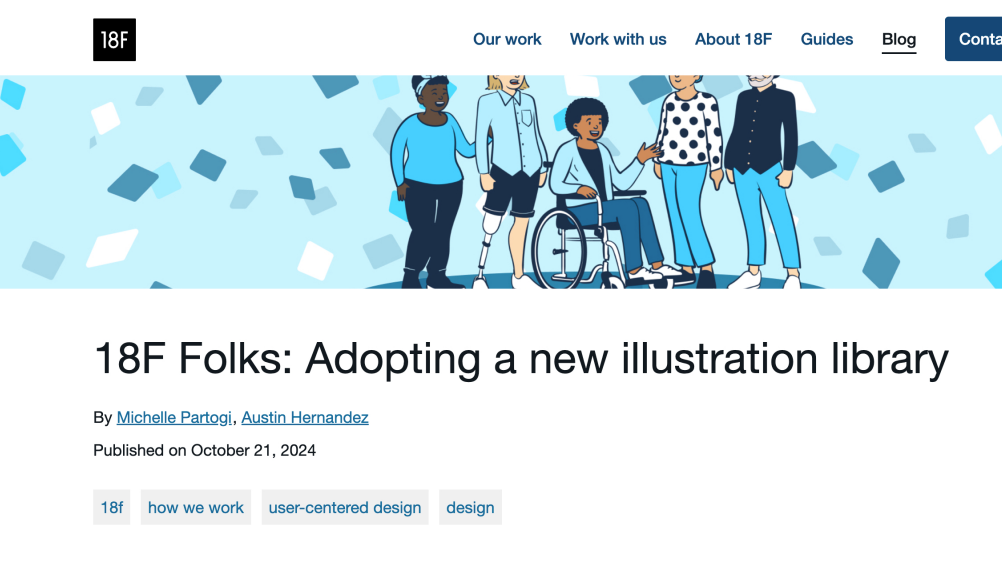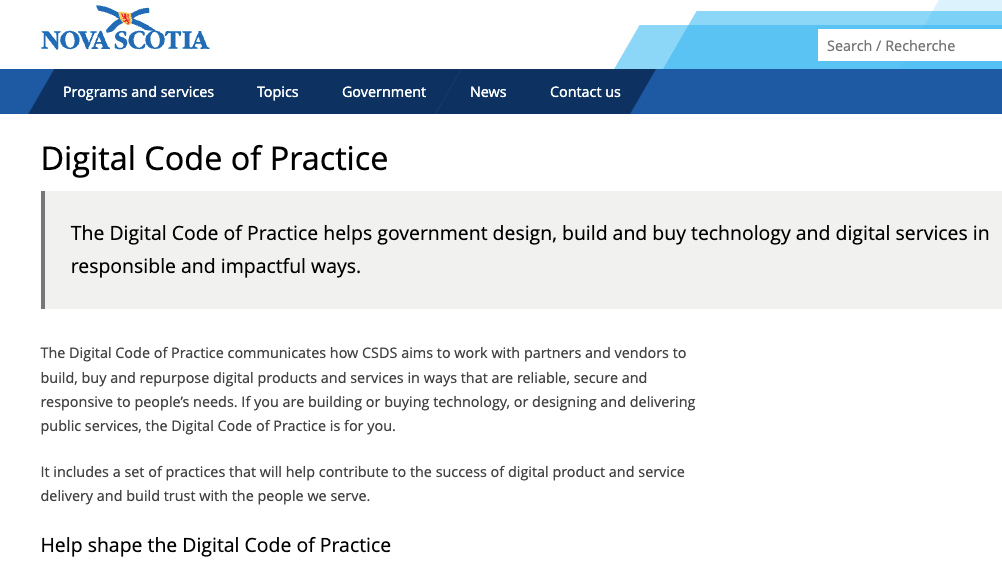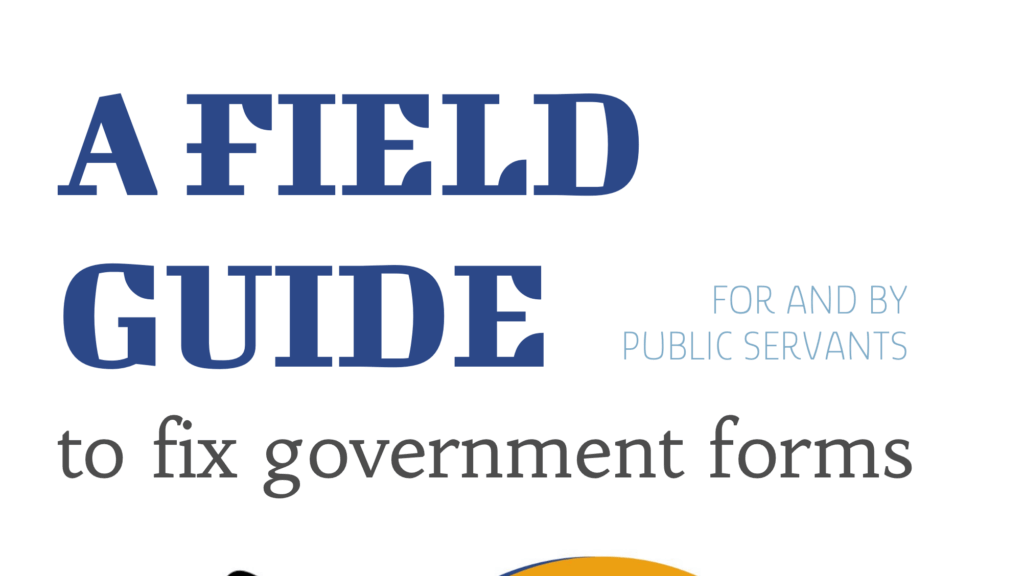FormFest 2024 Recap: Reducing Form Burden at the Federal Level
An event recap from one of FormFest 2024’s breakout sessions featuring speakers from DHS and the White House.
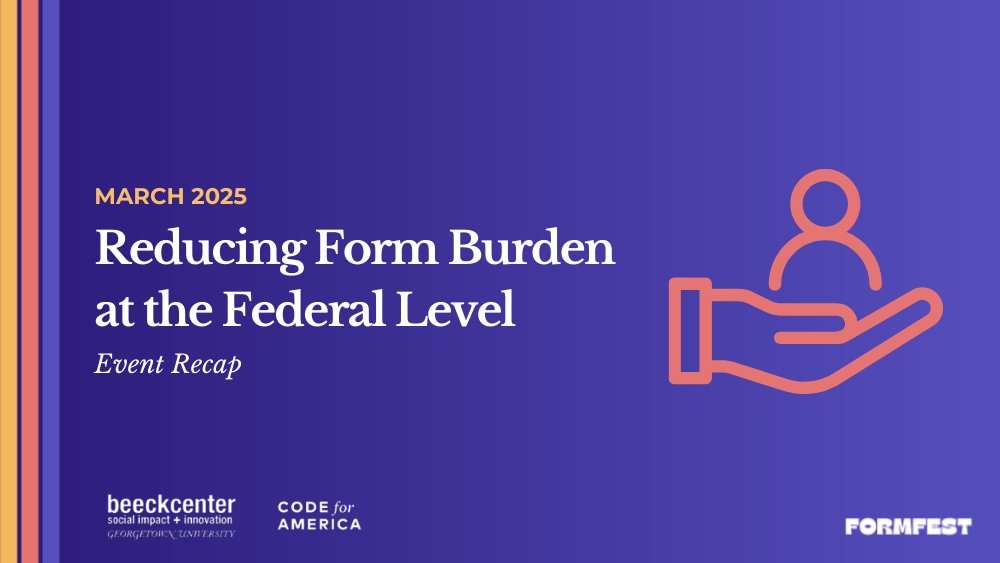
Speakers from this FormFest 2024 session walked audiences through the Department of Homeland Security’s (DHS) work creating a sustainable service with and for stakeholders and form owners. They also showcased the United States Digital Service’s process of keeping millions of Americans enrolled in Medicaid.
DHS Burden Reduction Initiative #2: A Boring Name for Better Forms

This session on government form redesign and burden reduction efforts highlighted the work of the Department of Homeland Security (DHS), led by Amy Chenault, Carl Staudinger, and David Fanto. Chenault, a designer and researcher in the DHS Customer Experience Directorate, shared insights on Burden Reduction Initiative #2, focusing on redesigning and standardizing government forms to improve accessibility and efficiency. Staudinger, a senior creative designer at ECS Federal, and Fanto, a UX multimedia specialist at ECS, discussed the technical aspects of the redesign process.
Key topics included the challenge of standardizing over 75% of DHS forms to improve accessibility and increase usability, while accommodating diverse needs across various departments. Chenault emphasized the importance of building trust with form owners by engaging them in the process and respecting their expertise. Staudinger and Fanto elaborated on the development of a Microsoft Word-based form design system to democratize form creation and ensure 508 compliance. The group also spent time explaining the iterative nature of the project, where form standards evolved based on specific needs of different DHS branches. Additionally, the speakers highlighted the tools used to manage the project, such as custom-built dynamic systems to track the progress of form revisions, replacing the reliance on cumbersome spreadsheets. The session concluded with reflections on the successes of the project, highlighting a 100% adoption rate of the new system, and the importance of collaboration and flexibility in such large-scale government projects.
The Best Form is No Form: Protecting Health Coverage for Millions of Americans
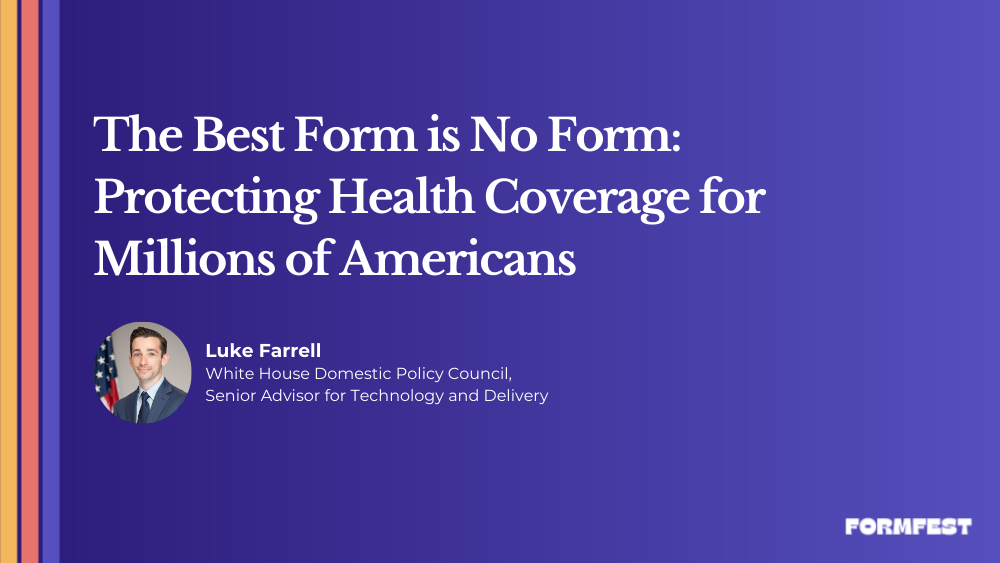
The Medicaid unwinding process in 2023 underscored the lesson that the best forms are often no forms at all, according to Luke Farrell. The end of the public health emergency required 90 million Americans to renew their Medicaid benefits, but outdated state systems and bureaucratic barriers created the risk that many eligible people would lose coverage due to administrative issues, such as incorrect addresses or disconnected phone numbers.
To resolve this, Farrell’s team implemented ex parte renewals—an automatic renewal system that uses existing state data like income and immigration status, allowing beneficiaries to renew without filling out forms. This system worked effectively in states like Oregon, where automatic renewals reached 90%, but states like California saw much lower renewal rates (fewer than 30%). To address these disparities, Farrell’s team collaborated with over 10 states, working closely with policymakers, caseworkers, community organizations, and technical vendors to improve renewal processes. The team’s efforts resulted in a 22% increase in automatic renewals and a 10% reduction in procedural terminations. In California, millions were automatically renewed without the need for lengthy paperwork. They also streamlined the manual renewal process by pre-populating forms and redesigning communication tools to encourage greater engagement with renewal notices. The results were impressive—over 5 million renewals were processed automatically, saving 2.5 million hours for enrollees and avoiding 2 million hours of caseworker time. This process saved millions of dollars in administrative costs and set a precedent for future efficiency improvements in Medicaid and similar programs.
Farrell emphasizes the broader implications of these improvements, which can be applied to other public benefits programs to streamline operations and reduce reliance on paper forms. Key takeaways include automating eligibility determinations, leveraging existing data to simplify processes, and using data to inspire buy-in from states with lower renewal rates. Demonstrating the success of neighboring states can prompt leaders to set ambitious targets and improve their processes. The speakers also stress the importance of clear, structured processes when working with form owners to improve public benefit applications. By walking stakeholders through the form review process and showing the step-by-step improvements, they made it easier for them to understand and engage with necessary changes. A key tactic involved making leadership experience the frustration of complex forms, which helped motivate change.
The automatic Medicaid renewal process prioritized privacy through HIPAA (the Health Insurance Portability and Accountability Act) compliance, minimized necessary personal data collection, streamlined verification with backend wage information integration, and improved efficiency by transitioning from PDF forms to more advanced design systems. Through these efforts, millions of Americans were able to keep their Medicaid coverage, and the methodology developed during the public health emergency continues to offer valuable lessons for improving government processes and public benefits systems in the future.
Key Takeaways
- Smart data, less paperwork: When systems talk to each other, citizens don’t have to fill in the blanks.
- Both the DHS Burden Reduction Initiative and the Medicaid renewal process emphasize the importance of automating eligibility determinations and simplifying administrative procedures by leveraging existing data. This reduces reliance on paper forms, streamlines operations, and minimizes barriers for beneficiaries.
- Collaboration isn’t optional, it’s operational: Cross-agency teamwork turns bureaucratic bottlenecks into breakthrough solutions.
- Successful government reform projects, such as those led by DHS and the White House Domestic Policy Council, rely on collaboration across multiple stakeholders, including form owners, policymakers, and technical vendors. Flexibility and iterative design processes ensure that solutions can adapt to diverse needs and improve efficiency.
- Privacy by design, accessibility by default: The best forms protect data while empowering people.
- Ensuring privacy and compliance with regulations, such as HIPAA for Medicaid, is crucial in any system redesign. Both efforts emphasized the importance of using only necessary data to protect personal information while simplifying forms and improving accessibility.
See more from this session at FormFest 2024:
Watch the session recording and more from FormFest 2024.
Reducing Form Burden at the Federal Level
This session from FormFest 2024 featured the Department of Homeland Security and the United States Digital Service talking about their work to reduce form burdens for internal and external users.
Running Into the Fire: A FormFest 2024 Profile
A profile on FormFest speaker Luke Farrell, featuring stories about his motivations for working on public sector form innovation.
About FormFest
FormFest is a free virtual event showcasing governments working to make services accessible to everyone through online forms. Discover best practices and tools that are shaping the future of form design and service delivery.
